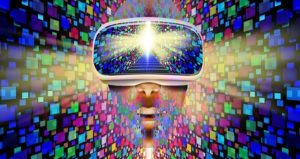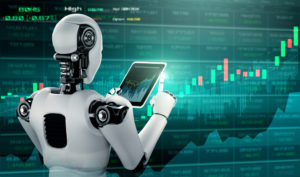
Accenture Report Highlights Tech Trends Merging the Digital and Physical

(Lightspring/Shutterstock)
Accenture’s latest Technology Vision 2023 report contains insights into how key technologies are converging to merge the digital and physical worlds. Though the digital world has grown by leaps and bounds, it has yet to be fully integrated into the physical world, creating challenges in digital identity and data inoperability, environmental impact, and workforce changes.
“When Atoms Meet Bits: The Foundations of Our New Reality” explores four key trends the company envisions for the future of digital transformation, including generative AI, emerging data technologies, digital identity tech, and scientific technology.
Generative AI is Changing the Game
The first transformative trend is generative AI. Accenture was ahead of the game by highlighting this trend in last year’s report, many months before ChatGPT became a household name. Foundation models built on transformer technology, like GPT-4, are rapidly advancing and businesses across many industries are exploring them for tasks like customer service bots, generative product design, and automated coding. Foundation models are also enabled by their increased scale brought on by advances in computing infrastructure, as well as training methods like few-shot and zero-shot learning that enable models to complete new tasks with few or no examples.
“It is imperative for every business to pay attention to foundation models. To be part of this new generation of AI applications and leverage these models to drive novel business solutions and offerings, companies need to understand their strengths and capabilities and track how they are advancing—starting today,” the report states.
One author of the report, Paul Daugherty, Accenture group chief executive of technology and CTO, says there are two ways to think about generative AI when deciding how to use it for business: consume or customize. During a kickoff presentation for the report, he asked, “Will you be a consumer of it? Will you use ChatGPT, DALL-E, Stable Diffusion? Or will you customize AI, will you fine-tune models, or develop your own models? How will your own data be integrated?”
Daugherty says that custom models will be the future: “We believe from the work we’ve done that customized models is where the vast majority of the value will be for organizations, which has implications for how you prepare for it, how you set your architecture, how you build your talent, and how you move forward.”
The report details how businesses should adapt their AI strategies, and talent strategy will be crucial as foundation models continue to emerge. AI operations will transition from creating models to building upon them, emphasizing the importance of skilled talent who can customize and integrate foundation models. Accenture says it will be essential to involve the entire organization with monitoring model outputs and addressing related challenges, which may involve training all employees on foundation model capabilities or forming dedicated teams for model integration.
Data Transparency Pushes New Solutions
Another key trend relates to changes in the data ecosystem due to the increasing volume of data and the growing demand for transparency. The report notes that stakeholders such as governments, consumers, employees, and business partners have high expectations around data transparency, and many corporate data architectures are not well equipped for governance. Data is being generated at an unprecedented rate, and to responsibly manage it, enterprises need increased data access along with a focus on data quality.
Michael Blitz, report author and managing director of Accenture Technology Vision, says his team was interested in the data aspect of exploring the intersection of the digital and physical because “We are subtly moving towards a world that is going to be massively transparent.” In a press briefing, he went on to say that these “windows of transparency” will cause businesses to think about their data strategy and infrastructure differently.
“Most of the global 2000 companies right now, data strategies are based on the assumption from almost 20 years ago that says ‘We’re dealing with limited data, and we’re trying to make the best decisions we can by grabbing insights from what data we’ve got,’” Blitz told Datanami in a press briefing. “I think what we’re really pushing is that this is still true, but more and more we are moving toward windows [of transparency] that say ‘I know everything about my supply chain. I know every product that goes through it. I know everything about my manufacturing plant and what goes through it.’”
Accenture recommends examining a business’s entire data lifecycle which involves rethinking what data is collected and how, looking at the data management approach and identifying shortcomings, reassessing how data is used and who has access to it, and determining which business functions data can serve.
There are several technologies that can improve data strategies. Knowledge graphs visualize links between related data points and often include semantic layers, or text descriptions of data, which can make it easier to search for data and increase productivity. Self-service analytics is another key area, as it can empower non-technical employees to find insights without bogging down the data science team.
Data mesh and data fabric are emerging strategies that can help streamline and de-silo data architectures. Data fabrics build a single source of truth across disparate sources using automation and metadata, while data mesh treats each data source as an independent product with domain-specific expertise and management.
Blitz says the authors included data mesh and other emerging data tech as a way to start talking about how businesses can start dealing with the deluge of data in real-time through re-thinking data infrastructure: “It’s going to start to be much more personalized and driven, with the need to make connections around the context and real-time aspects, and most of the data architectures are not cut out for it. These technologies we’re talking about within the report are the stepping stones for companies looking to solve how to get data to the right place at the right time once you’re dealing with massive amounts of data,” said Blitz.
Protecting Digital Identity
Accenture says digital identity is driving the next wave of tech disruption and will play a crucial role in shaping business by future-proofing enterprises for new data sharing and ownership paradigms. In the often-tenuous connection between digital and physical life, protecting the gateway of digital identity is essential. The report found that digital identity is now seen by 85% of executives as a strategic business imperative, not just a technical issue.
“Leading innovators are creating a base layer of identity and forging solutions that will become our new on-ramp to the web,” the report states, noting that “Already, digitally born core identities are starting to emerge, spearheaded by governments, public-private partnerships, and grassroots efforts.”
One approach is to create decentralized platforms like Self-Sovereign Identity (SSI) which is based on blockchain and distributed ledger technology where validation relies on consensus mechanisms from multiple parties. Accenture says the advantages of distributed approaches are enhanced safety, security, and trust. However, challenges like usability, interoperability, and account recovery concerns can hinder their adoption.
The Science and Technology Feedback Loop
The final trend in the Technology Vision report has to do with the acceleration of science and technology as one. Accenture calls the relationship between science and technology a bi-directional feedback loop that drives progress and expands possibilities, and the report names three early domains where the cycle is significantly accelerating: materials and energy, Earth and space, and synthetic biology.
The report details how businesses will need to recognize the significance of the science tech revolution to remain competitive. As it stands, 95% of global executives believe next-generation computing will be a major driver of breakthroughs in their industry over the next decade. Addressing global challenges like pandemics, climate change, and supply chain issues will require companies to invest in science tech to develop solutions more rapidly and effectively.
Varying levels of maturity across industries may hinder embracing science tech, Accenture notes, and companies should focus on collaboration, especially in highly specialized fields like quantum computing. The report recommends that organizations experiment with emerging science platforms to gain experience and knowledge while remaining aware of the risks associated with key drivers of the science-technology revolution, such as synthetic biology and quantum computing, and prepare accordingly.
The convergence of these technology trends will change the world, according to the report’s authors: “We’ve arrived at an exciting frontier of technology innovation for businesses, one where we’re not just digitizing but starting to put that digital foundation to work. Fusing digital and physical is not only generating new products and services, but it’s also the force behind a new era of scientific research. Leaders are creating the next set of tools and disruptions poised to rewrite how the world works. And what’s become clear is that when atoms and bits collide, truly new possibilities emerge.”
Read the full report at this link.
Related Items:
Only 12% of AI Users Are Maximizing It, Accenture Says
Accenture Collaborates with Mars on ‘Factory of the Future’ Using AI, Cloud, Edge and Digital Twins
Accenture Report Explores the ‘Unreal’ World of Synthetic Data and Generative AI



































